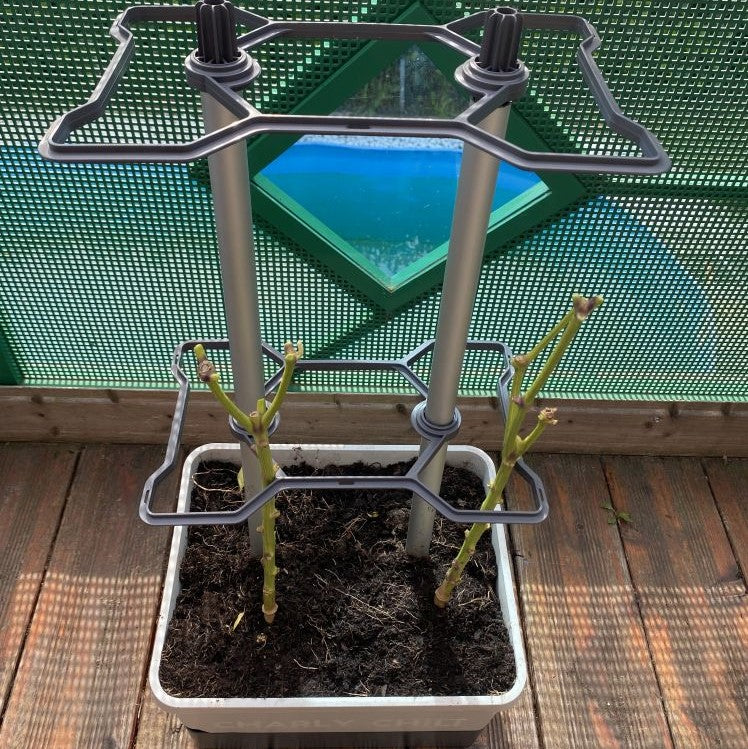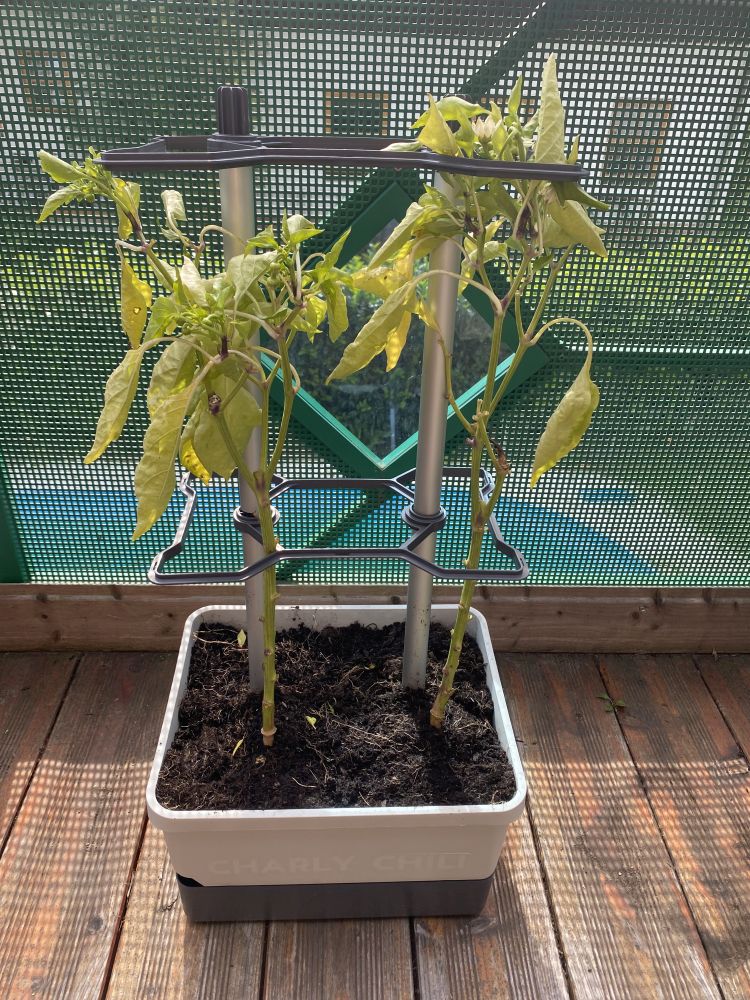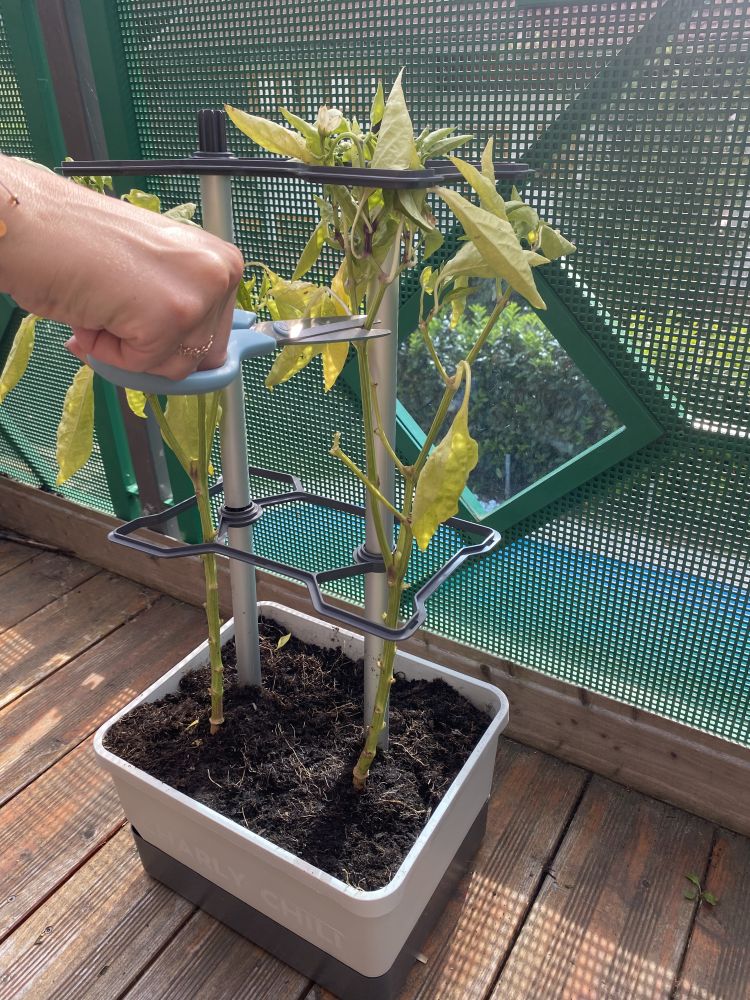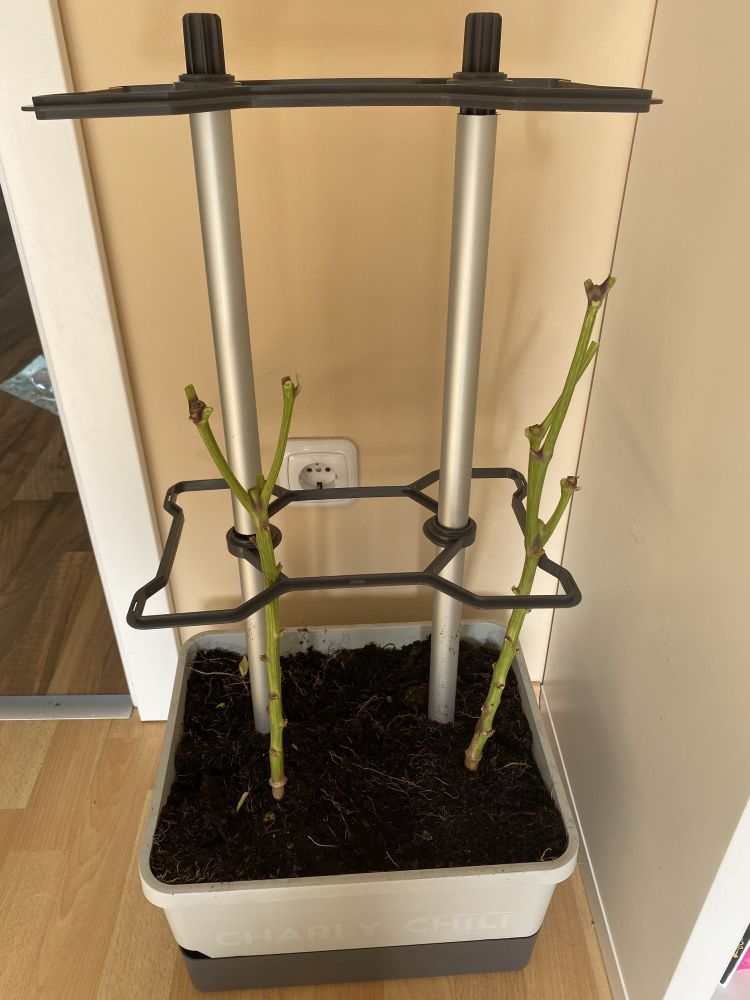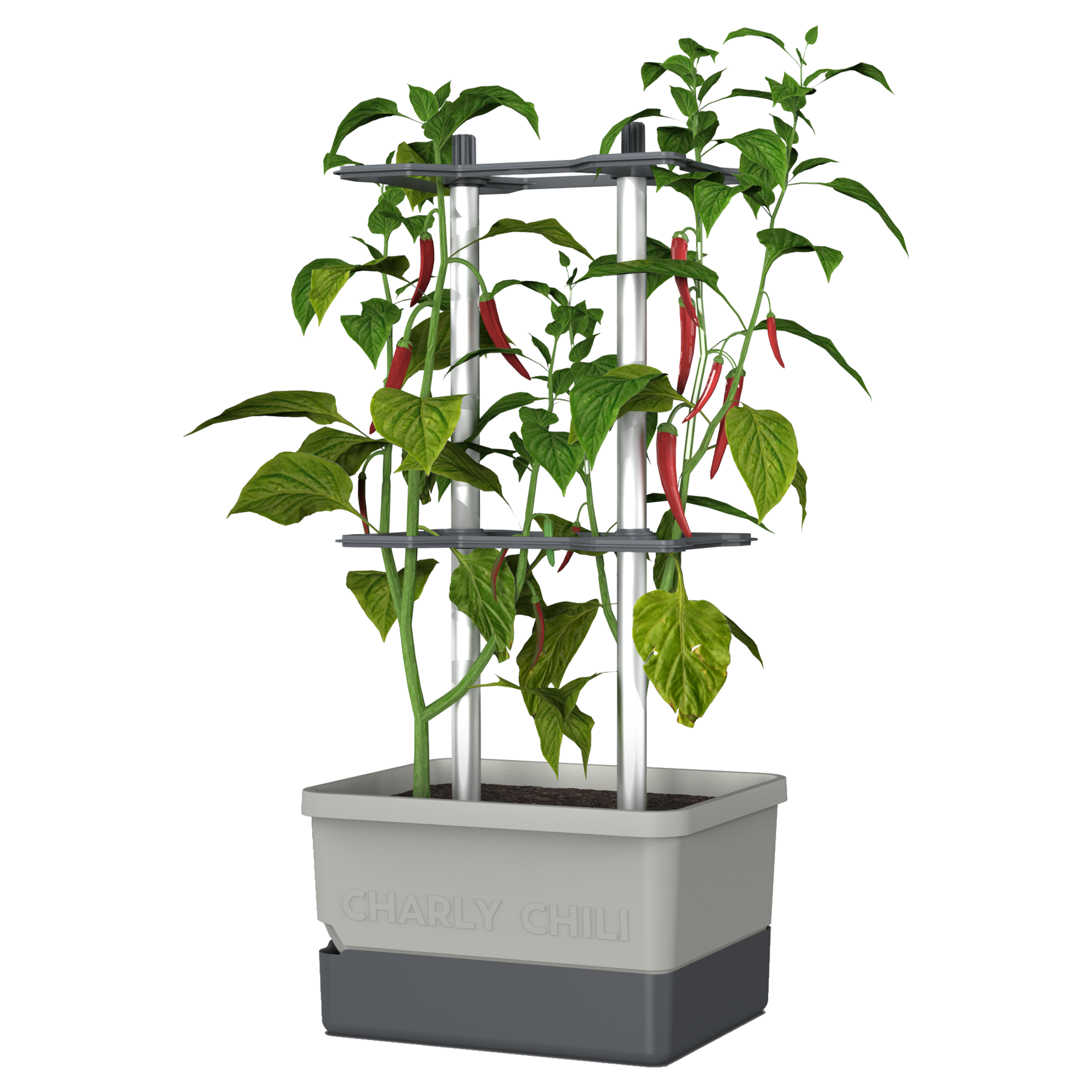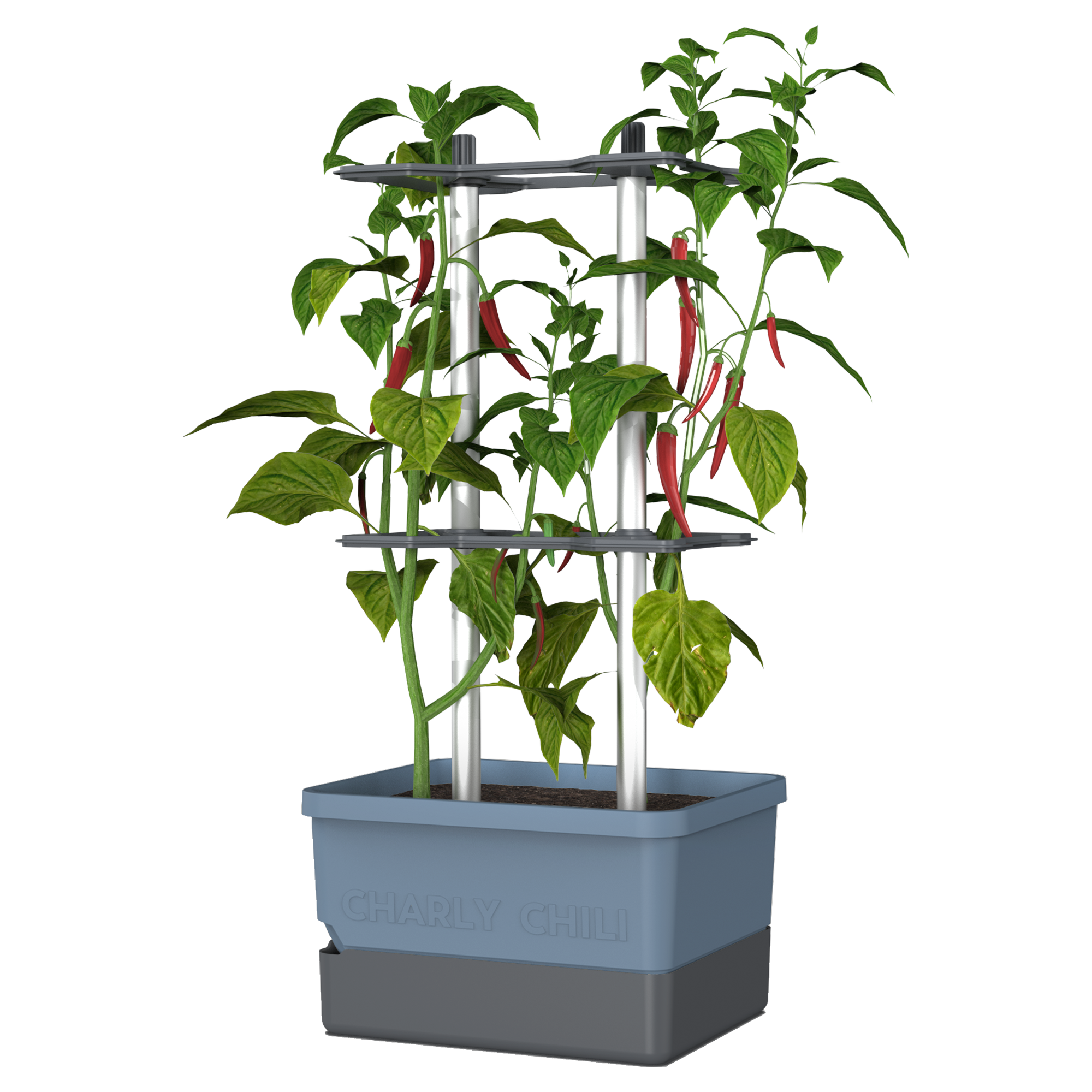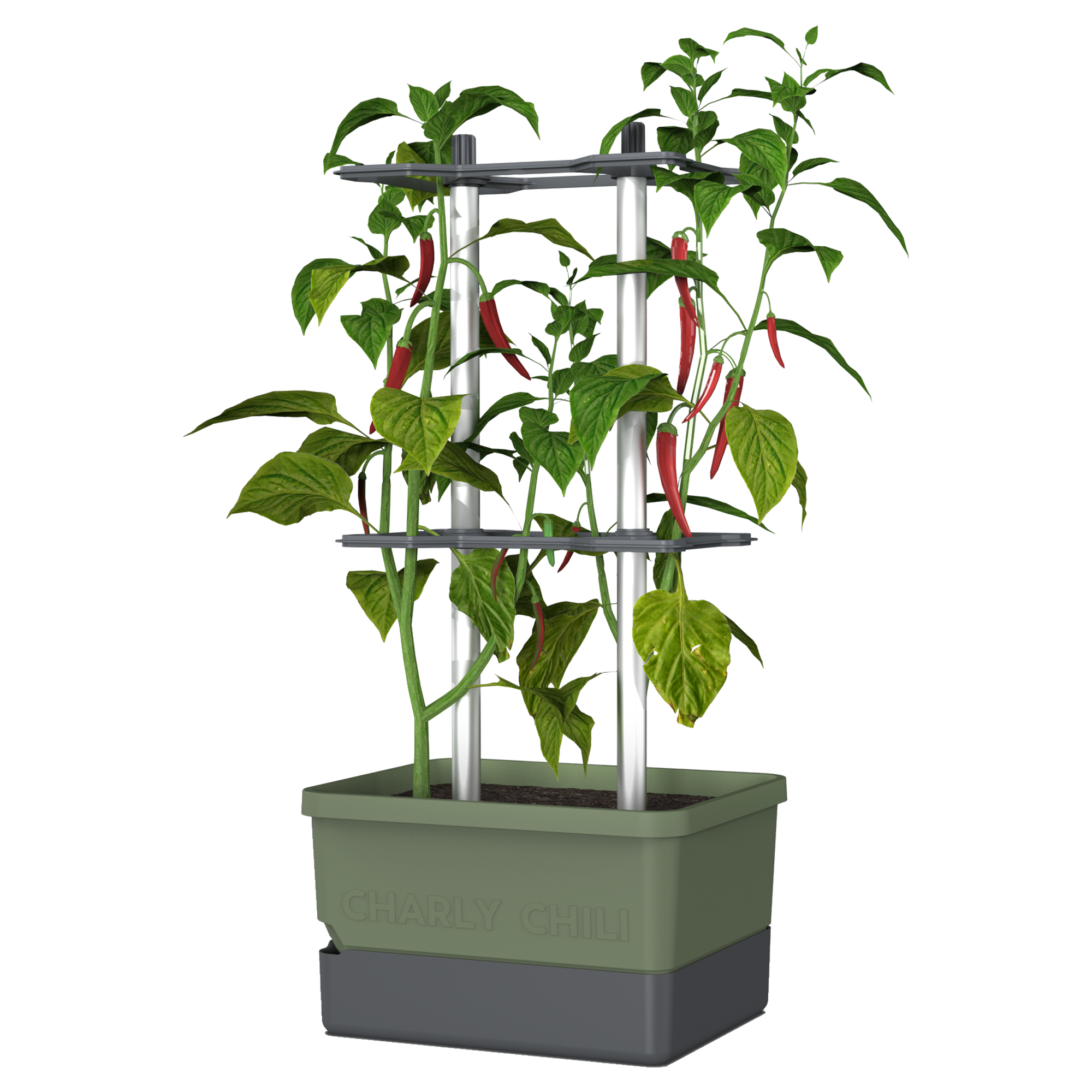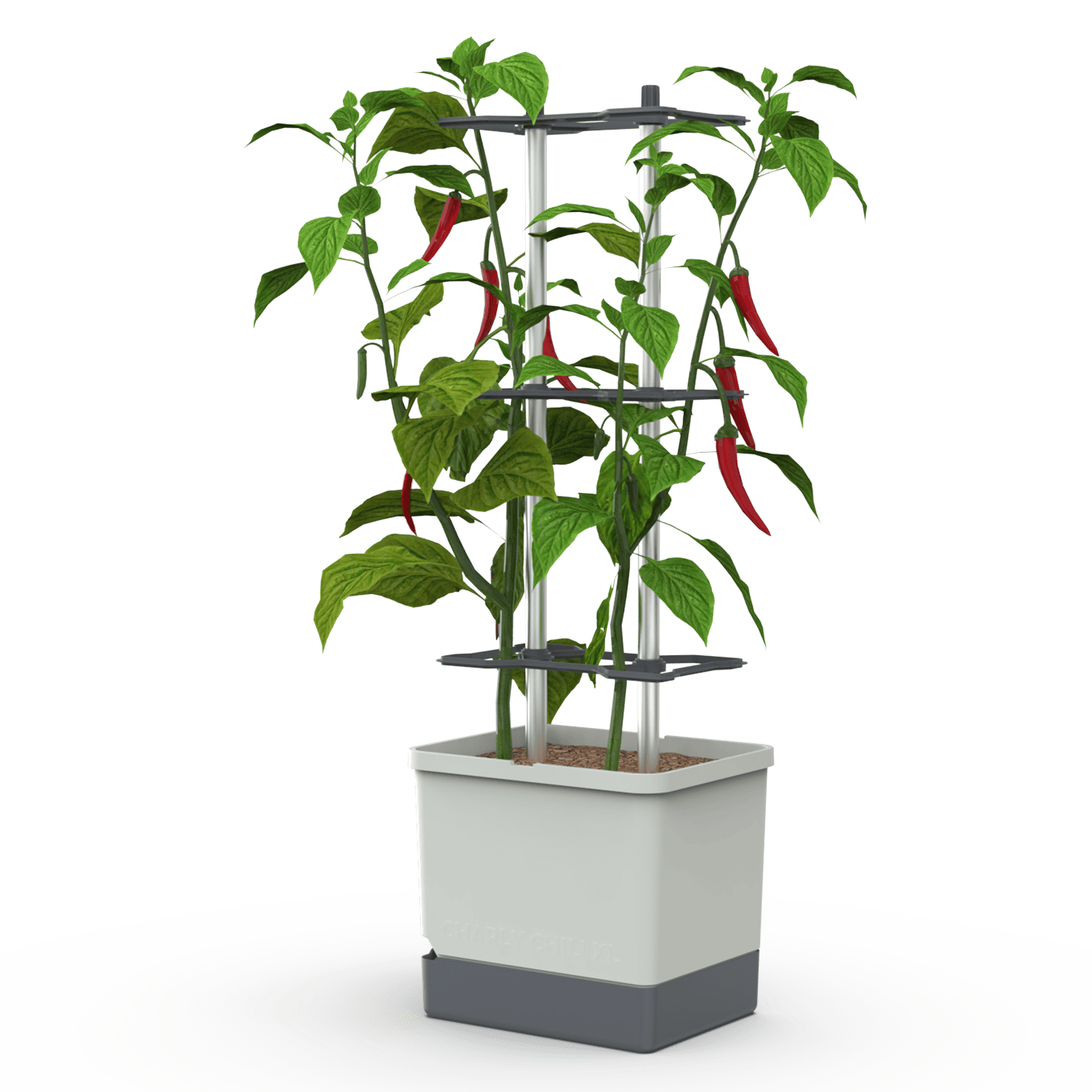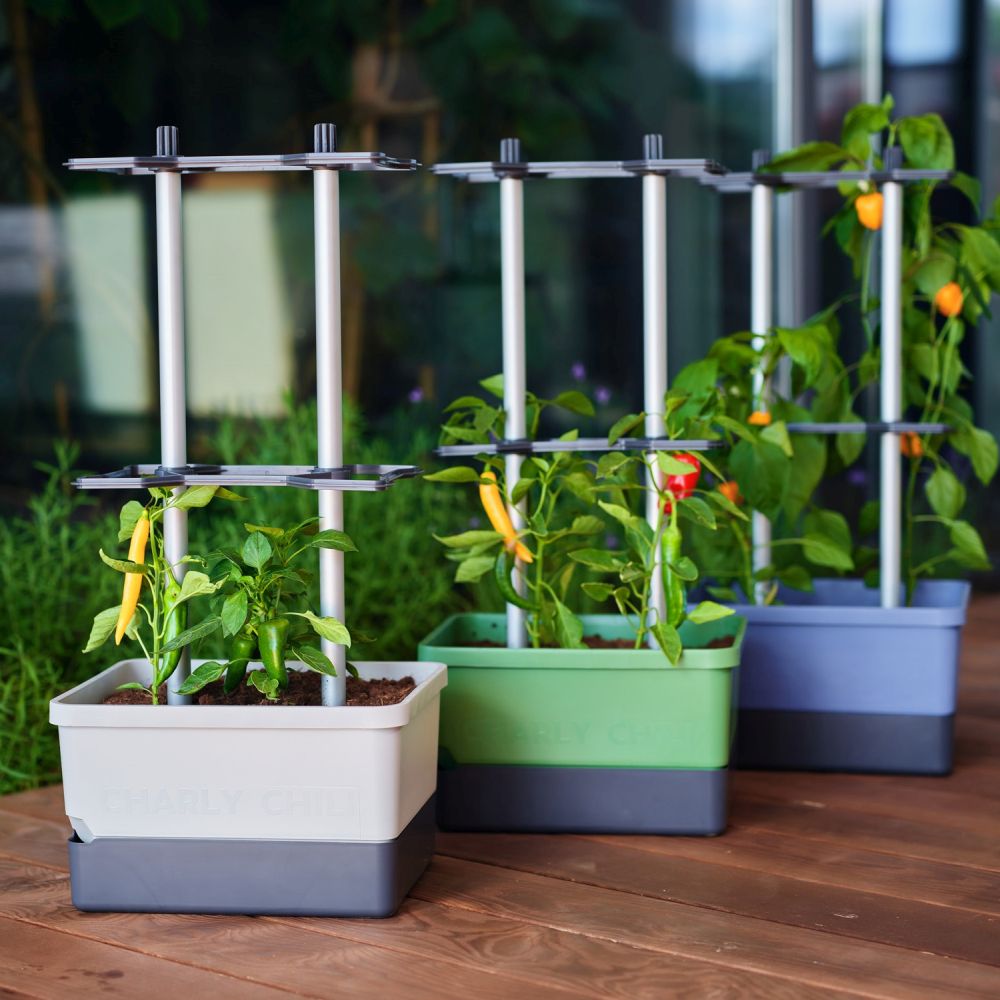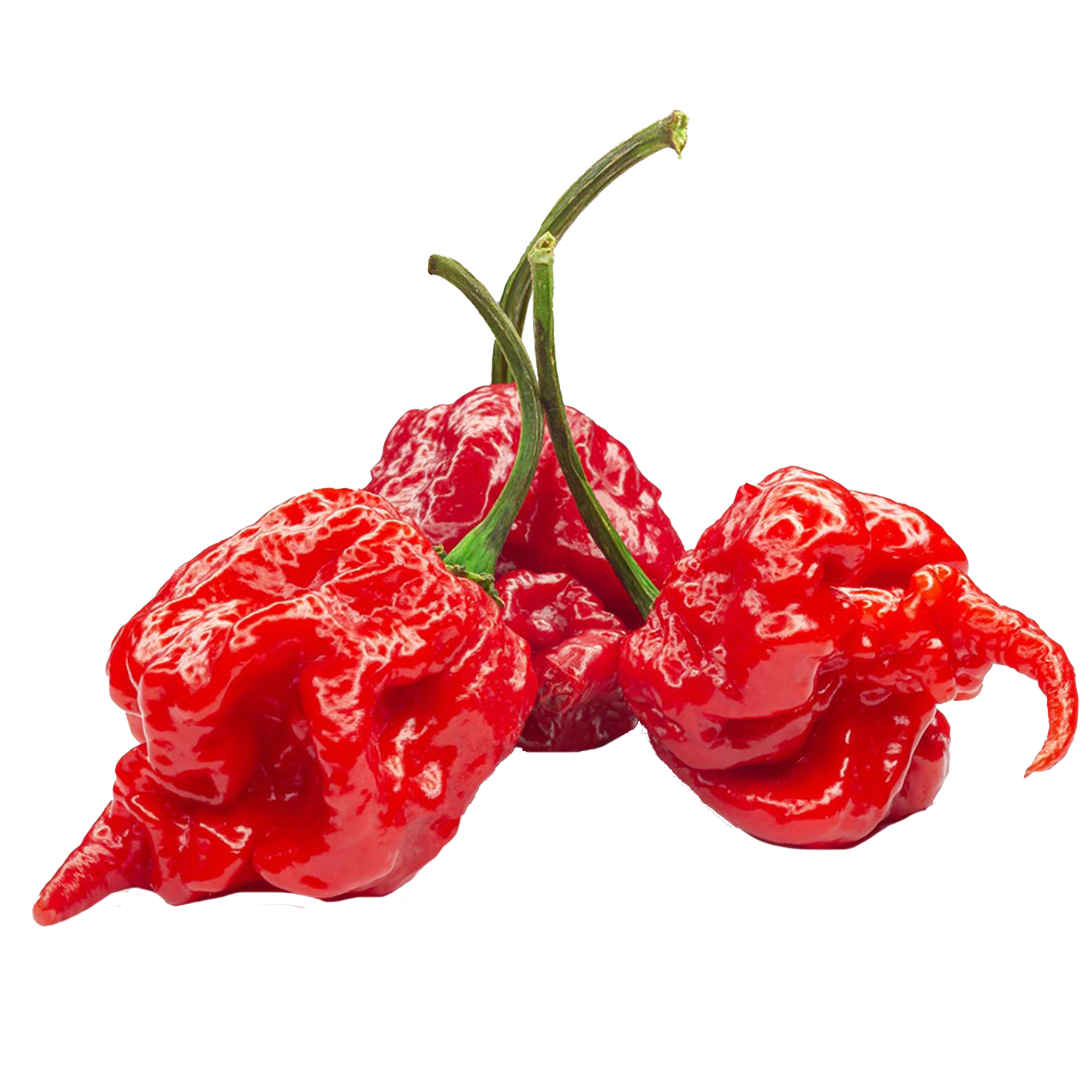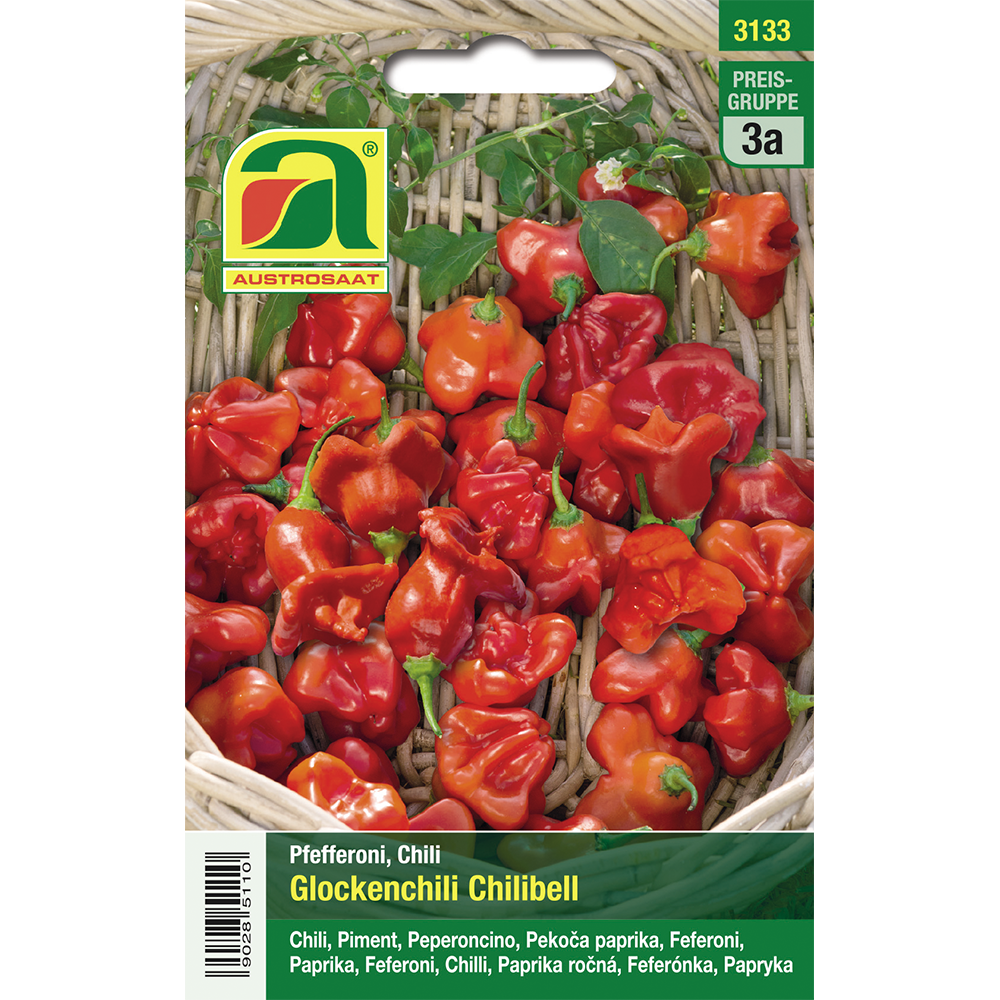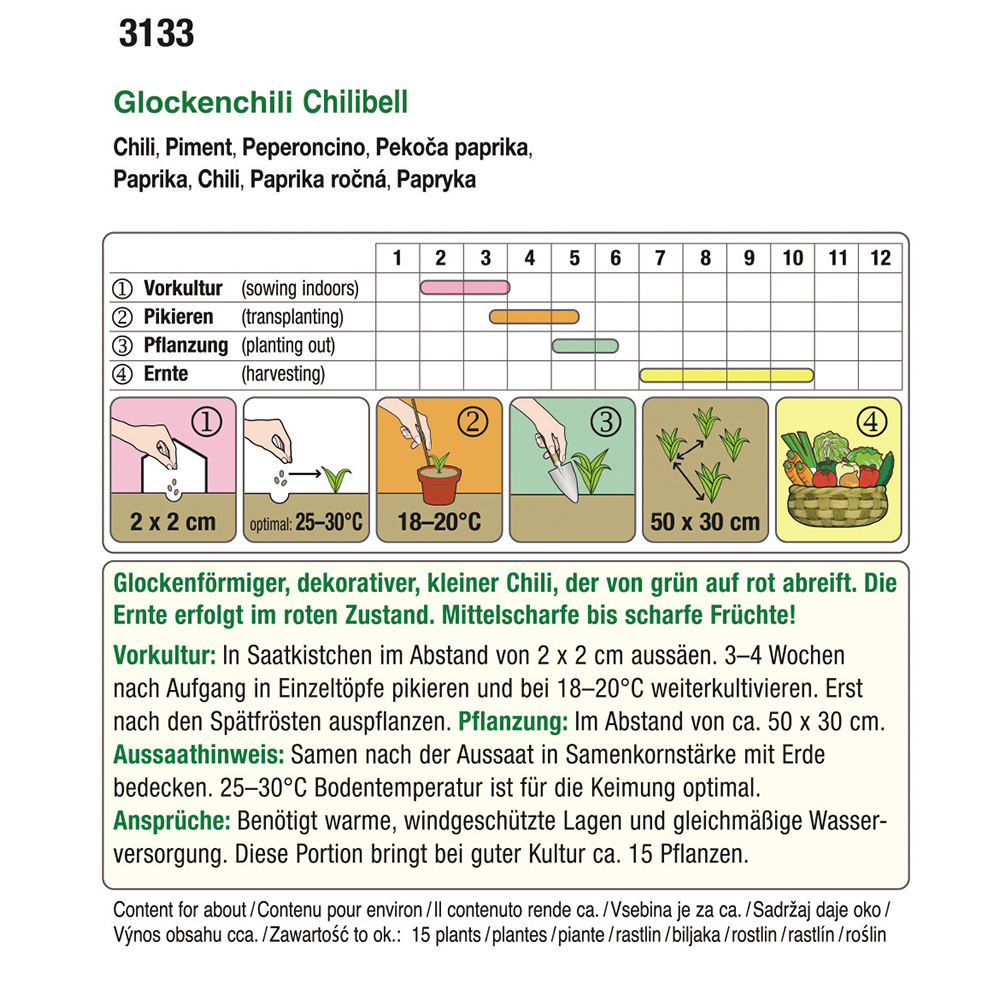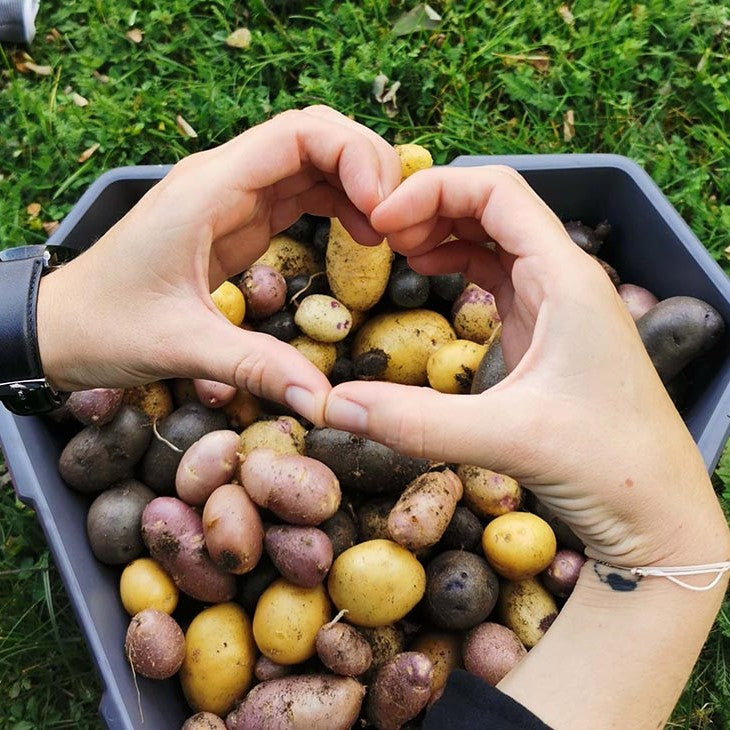
Chili plants are a heat-loving vegetable and, like tomatoes, must be disposed of after harvesting... WRONG! Did you know that there are many perennial chili varieties in addition to annuals? Perennial varieties can bear fruit for many years and give you a bountiful harvest. This means that after harvesting, with proper care and in the right location, you can easily overwinter them directly in CHARLY CHILI :
Preparation is everything
Since the heat-loving chilies originally come from Central and South America, they cannot tolerate frost. So if the temperatures fall below 10°C in autumn, it will be too cold for your plants and you should definitely move them to a suitable place to overwinter.

1. Crop
Before overwintering, you should harvest the last fruits that your chili may still bear. Dried and dead plant parts as well as yellow leaves must also be removed. Additionally, cut back the thin branches up to the first node after branching so that the plant does not invest its energy in new shoots and leaves. This also means that it grows back more densely. It is important that you do not shorten the main trunk.
2. The right location
Chili plants prefer a cool, frost-free and bright room to overwinter. A slightly heated winter garden or a window in the stairwell is ideal here. The location should never be too dark, otherwise the plant can easily be attacked by pests such as spider mites or aphids. Again, make sure that the room temperature is not below 10°C. A temperature between 10 and 20° C would be optimal.
3. Water chili plants properly
This is probably new for you, but remember to stop watering in good time because you need to let the soil dry out well before the winter rest. In general, you should only water your chili plants very little over the winter and not fertilize them at all. A good average, so that the soil is never too moist but does not dry out is optimal. Spraying the leaves regularly is helpful to protect the plant from drying out, especially in rooms with dry heating air.
ALREADY KNEW?
Did you know that chili plants go dormant? By overwintering in a cool location, they enter a kind of hibernation and gather strength for the new season, which is why they need much less water than usual.
Start into the new season
From around mid-February you can start watering regularly again. Treat your chili plants to fresh soil after the winter break and add an organic long-term fertilizer . At the end of April you can put your CHARLY CHILI outside again.With these tips you can easily overwinter your chili plants and harvest lots of mild to fiery hot chilies from your CHARLY CHILI the following year.
The most important tips summarized for you
- at temperatures below 10°C 👉 Winterize chili plants
- Stop watering and let the soil dry out
- Remove yellow leaves and dried plant parts
- Cut thin branches up to the first node of the branch
- Overwinter in a bright, cool but frost-free room
- Water little and DO NOT fertilize
- Water regularly again from mid-February
